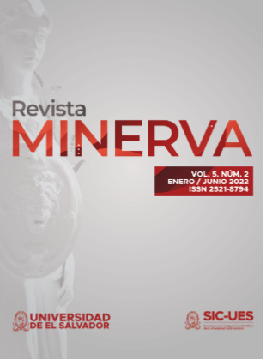Propiedades físicas y químicas de materiales tipo hidroxiapatita sintetizados a partir de residuos de la industria alimentaria mediante el empleo de un método sol-gel modificado
Palabras clave:
Hidroxiapatita, Método sol-gel, Residuos industriales, Economía circular, Propiedades físicas, Propiedades químicasResumen
El aprovechamiento de residuos industriales es parte fundamental del paradigma de la economía circular. El presente trabajo muestra que pueden ser sintetizados materiales sólidos tipo hidroxiapatita a partir de residuos de la industria alimentaria (i.e. cascarón de huevo y concha de molusco) empleando una metodología experimental basada en el método sol-gel modificado. Para este trabajo han sido utilizadas materias primas menos tóxicas y menos costosas que las empleadas en las síntesis clásicas. También, se ha propuesto el uso de una sustancia natural como agente generador de porosidad para preparar materiales con distintas propiedades físicas y químicas. Mediante el empleo de distintas técnicas analíticas fueron caracterizados los materiales sintetizados, confirmando que la fase mayoritaria es hidroxiapatita acompañada por una fase secundaria de fosfato tricálcico, además, se identificaron residuos de carbonato de calcio y óxido de calcio, como producto de descomposición del carbonato. La temperatura de envejecimiento y la temperatura de calcinación son parámetros que otros autores han reportado que influyen sobre las propiedades físicas y químicas de los materiales sintetizados, en este trabajo se ha confirmado que la relación entre la cantidad de agente generador de porosidad y la cantidad de sol (Sol. C) influye sobre las propiedades de los materiales sintetizados; por ejemplo, determina como se ve afectado el porcentaje de fase de hidroxiapatita.
Descargas
Referencias
Castro, M. A. M., Oliveira, T. P., Correia, G. S., Oliveira, M. M., Rangel, J. H. G., Rodrigues, S. F. & Mercury, J. M. R. (2020). Synthesis of hydroxyapatite by hydrothermal and microwave irradiation methods from biogenic calcium source varying pH and synthesis time. Boletin de La Sociedad Espanola de Ceramica y Vidrio.
Chen, S. B., Ma, Y. B., Chen, L. & Xian, K. (2010). Adsorption of aqueous Cd2+, Pb2+, Cu2+ ions by nano-hydroxyapatite: Single and multi-metal competitive adsorption study. Geochemical Journal, 44(3), 233– 239.
Choudhary, R., Koppala, S. & Swamiappan, S. (2015). Bioactivity studies of calcium magnesium silicate prepared from eggshell waste by sol-gel combustion synthesis. Journal of Asian Ceramic Societies, 3(2), 173–177.
Crystallographic and Crystallochemical Database for Minerals and their Structural Analogues. (n.d.). Russian Academy of Sciences. http://database. iem.ac.ru/mincryst/index.php
Fihri, A., Len, C., Varma, R. S. & Solhy, A. (2017). Hydroxyapatite: A review of synthesis, structure and applications in heterogeneous catalysis. Coordination Chemistry Reviews, 347, 48–76.
Guo, X., Yan, H., Zhao, S., Li, Z., Li, Y. & Liang, X. (2013). Effect of calcining temperature on particle size of hydroxyapatite synthesized by solid-state reaction at room temperature. Advanced Powder Technology, 24(6), 1034–1038.
Mohd Pu’ad, N. A. S., Abdul Haq, R. H., Mohd Noh, H., Abdullah, H. Z., Idris, M. I. & Lee, T. C. (2019). Synthesis method of hydroxyapatite: A review. Materials Today: Proceedings, 29(November 2018), 233–239.
Mostafa, N. Y. (2005). Characterization, thermal stability and sintering of hydroxyapatite powders prepared by different routes. Materials Chemistry and Physics, 94(2– 3), 333–341.
Ozhukil Kollath, V., Van Den Broeck, F., Fehér, K., Martins, J. C., Luyten, J., Traina, K., Mullens, S. & Cloots, R. (2015). A Modular Approach to Study Protein Adsorption on Surface Modified Hydroxyapatite. Chemistry - A European Journal, 21(29), 10497–10505.
Pham Minh, D., Nzihou, A. & Sharrock, P. (2014). Carbonated hydroxyapatite starting from calcite and different orthophosphates under moderate hydrothermal conditions: Synthesis and surface reactivity in simulated body fluid. Materials Research Bulletin, 60, 292–299.
Pokhrel, S. (2018). Hydroxyapatite: Preparation, Properties and Its Biomedical Applications. Advances in Chemical Engineering and Science, 08(04), 225– 240.
Sánchez-Salcedo, S., Vila, M., Diaz, A., Acosta, C., Barton, I., Escobar, A. & Vallet-Regí, M. (2016). Synthesis of HA/β-TCP bioceramic foams from natural products. Journal of Sol-Gel Science and Technology, 79(1), 160–166.
Sow, P. Y. (2016). IR - spectroscopic investigations of the kinetics of calcium carbonate precipitation. Universitat Konstanz.
Szcześ, A., Hołysz, L. & Chibowski, E. (2017). Synthesis of hydroxyapatite for biomedical applications. Advances in Colloid and Interface Science, 249(April), 321–330.
Toibah, A. R., Misran, F., Shaaban, A. & Mustafa, Z. (2019). Effect of pH condition during hydrothermal synthesis on the properties of hydroxyapatite from eggshell waste. Journal of Mechanical Engineering and Sciences, 13(2), 4958– 4969.
Wu, S. C., Hsu, H. C., Hsu, S. K., Chang, Y. C. & Ho, W. F. (2016). Synthesis of hydroxyapatite from eggshell powders through ball milling and heat treatment. Journal of Asian Ceramic Societies, 4(1), 85–90.
Zhu, J., Kong, D., Zhang, Y., Yao, N., Tao, Y. & Qiu, T. (2011). The influence of conditions on synthesis hydroxyapatite by chemical precipitation method. IOP Conference Series: Materials Science and Engineering, 18(3), 6–10.
Descargas
Publicado
Número
Sección
Licencia

Esta obra está bajo una licencia internacional Creative Commons Atribución-CompartirIgual 4.0.


